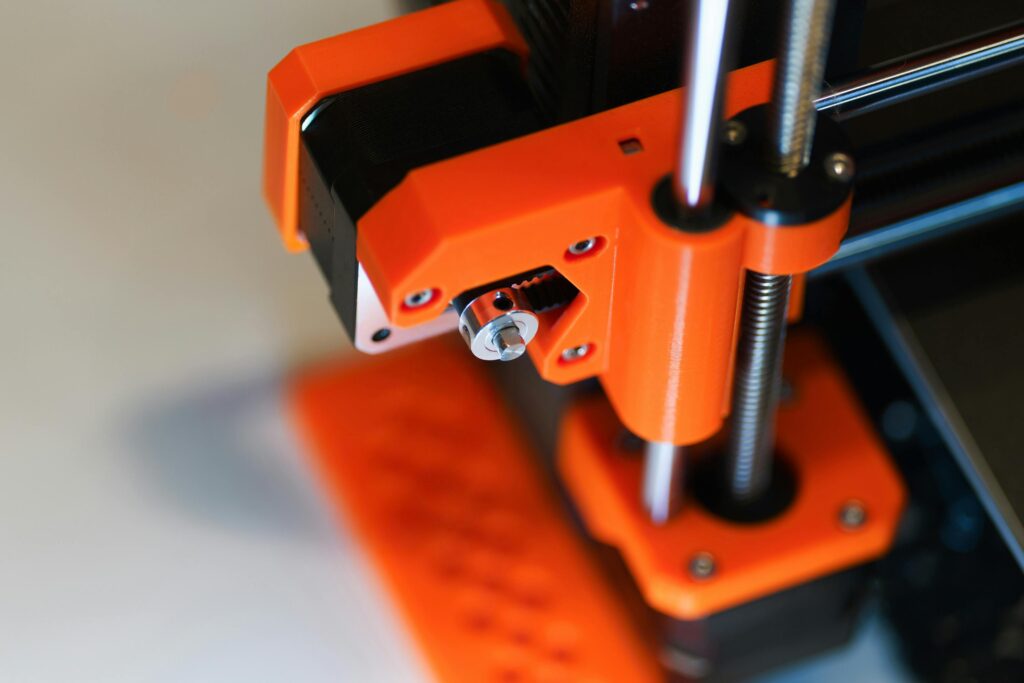How to Make Your Own 3D Models
Your favorite animated movie character, your computer, the bridge you cross on your commute to work—each of them, at some point, started out as a 3D model. The reality is, 3D modeling technology is all around us. It’s used across a wide range of industries, and we reap its benefits every day without even realizing it.
3D modeling is also more accessible than it has ever been. If you’ve ever wanted to try your hand at creating 3D models—as a hobby or for professional applications—there’s no shortage of software and resources to help you learn.

To help you get started, let’s take a look at what 3D modeling is, what it’s used for, different methods of creating 3D models and a few popular software options.
How Does 3D Modeling Work? 3D modeling is the process of developing three-dimensional representations of objects in a simulated space using specialized software. A 3D model is made up of vertices, which connect with each other to create shapes and can be moved around to manipulate those shapes. With the right tools, you can modify a 3D model in virtually any way, customizing its size, shape, color and texture.
3D Modeling Applications
Where do you commonly see 3D models in action? If your answer is animated movies and video games, you’re not wrong. However, there is so much more to the use of 3D modeling than that. Consider a few additional settings where 3D modeling is important: Film and TV
It’s easy to recognize 3D modeling in the latest Pixar film, but you’ve probably also seen a ton of CGI (computer-generated imagery) that you didn’t even realize wasn’t real. That involves 3D modeling, too!
Product Design
When a new product is being developed, it’s much more efficient and cost-effective to test prototypes and make adjustments in a simulated environment.
Engineering
Similar to its application in product design, 3D modeling allows engineers to develop machines and complex tools without having to physically create each prototype. Specialized modeling software can also be used to simulate and test performance.
Architecture and Interior Design
3D modeling is used to plan and design buildings and other large, complex structures. Interior designers also use it to virtually furnish spaces before finalizing their designs.
Healthcare
Anatomically correct 3D models are used in surgery planning and for training purposes, and 3D printing is revolutionizing the development of custom prosthetics and implants.
Techniques for Making 3D Models With so many different applications, a single method for creating 3D models wouldn’t be suitable for all of them. Because of this, there are a plethora of software options available to support each of the dozens of different approaches. Some of the most common 3D modeling techniques include:
Polygonal Modeling

This method involves constructing a 3D model’s surface using a collection of polygons. As you increase the number of polygons, you can achieve smoother surfaces and create more detail in your model. This method allows for a great deal of creative leeway, but it also leaves a lot of room for error. For this reason, it’s commonly used in applications where models need to have an organic look, but precision isn’t as important.
Non-Uniform Rational B-Splines (NURBS)
With NURBS, models are constructed using splines, rather than polygons. A spline is a curve in 3D space that’s defined by a mathematical function. This means that you can manipulate shapes with extreme precision, and your curves can be infinitely scaled (unlike with polygons, where you’ll start to see the jagged edges as you zoom in).
Parametric Modeling
With this method, 3D models are created using parameters that define relationships between certain design features. A simple example would be setting the height of an object to double its width. The height would change automatically as the width changed. This modeling method is particularly useful to engineers and product designers, as it allows them to quickly and efficiently test and refine their models.
A still from Jeffrey Wolfe’s Skillshare class Design for 3D Printing | Fusion 360 Masterclass. Procedure Simulation For the purpose of creating 3D models and textures, this method makes use of computer algorithms. It’s typically used to create large-scale models that would be too cumbersome to design manually. For instance, rather than manually modeling thousands of trees to create a forest, you would write code to automatically generate them. Sculpting Digitally The process of digital sculpting is very similar to that of working with real clay. It involves shaping and carving the 3D model with virtual sculpting tools and requires a great deal of artistic skill. Sculpting is typically done in conjunction with other modeling methods. For example, you would first create the model using polygonal modeling and then add details and texture with digital sculpting.
Still from Skillshare class Introduction To Blender Sculpting by Zerina 3D.
3D Scanning
Most of the modeling techniques we’ve talked about so far involve making new 3D models, usually to represent something that doesn’t yet exist in real life. However, if the intention is to create a digital replica of something that already exists, then a 3D scanner can be used to scan the object or person and recreate it in a virtual 3D environment. Oftentimes, the scan is then loaded into a modeling software for touch-ups and further editing.
Photogrammetry

Another option for recreating a real-life object in 3D is photogrammetry. It involves taking photos of the object from every angle (the more, the better) and using software to generate a 3D model based on the photos. It’s much more accessible than using a dedicated 3D scanner, but it’s time-consuming, and the results are dependent on the quality and number of photos you’re able to capture.
Software for Making 3D Models
If you’re interested in trying 3D modeling for yourself, start by choosing a software and familiarizing yourself with its basic functions. A few popular options for novices are listed below. All of them are either completely free or have a free limited version, so there’s no barrier to getting started.
- Blender
Blender is a free, open-source software that supports polygonal modeling, sculpting, NURBS, procedural modeling and more. It has lighting, rendering, animation and even video editing tools, giving you everything you need to turn your 3D models into a finished creative project. The best part is that it has an active community of users who are always working to make it better and support fellow creators. - SketchUp
SketchUp is the best option for beginners due to its user-friendly and simple interface. It’s particularly useful for engineers, architects and interior designers. With SketchUp, you get access to a vast library of pre-built models, so you can put together your designs quickly and efficiently. It offers a free web-based version, as well as a more feature-rich desktop version geared at professional users. - TinkerCAD
TinkerCAD is the perfect option for those who are completely new to 3D modeling. It’s free, web-based and has a minimal learning curve. It’s often used in classrooms to introduce students to the world of 3D modeling and help them grasp basic concepts. It’s also popular among 3D printing enthusiasts, as it offers simple drag-and-drop modeling tools and exports printer-compatible files. - Fusion 360
Additionally, TinkerCAD’s creators provide a professional-grade 3D modeling application aimed at individuals interested in engineering and product design. It offers a wide range of tools for parametric modeling, running simulations and exporting for manufacturing. Fusion 360 for personal use is free for one year, while the full software can be purchased as a subscription. - SculptGL
If you’d like to try your hand at digital sculpting, SculptGL is a free, web-based sculpting application. A lump of digital “clay” serves as the foundation for your workspace, which you can then sculpt into any shape you like with a wide range of tools. Thanks to its intuitive, user-friendly interface, you can start sculpting within seconds of opening the application.
Unleash Your Creativity with 3D Modeling
The world of 3D modeling offers limitless opportunities for creativity and innovation. Start your own journey with 3D modeling by choosing what type of modeling you’d like to focus on, selecting a software and finding tutorials to help you master it. Be ready to face a steep learning curve—feature-rich tools take some time to get to know. But with a bit of perseverance and the right resources for learning 3D modeling, you’ll be a pro in no time!


